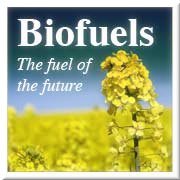 Does the code B100 mean anything to you? Don’t feel bad if not, we’re only just beginning to realize the potential of this new wave of alternative energy. B100 is the pure form of Biodiesel; an emerging fuel manufactured from vegetable oils, animal fats, or recycled restaurant greases. It is safe, biodegradable, and produces less air pollutants than petroleum-based diesel.
Does the code B100 mean anything to you? Don’t feel bad if not, we’re only just beginning to realize the potential of this new wave of alternative energy. B100 is the pure form of Biodiesel; an emerging fuel manufactured from vegetable oils, animal fats, or recycled restaurant greases. It is safe, biodegradable, and produces less air pollutants than petroleum-based diesel.
What’s more is the fact that it can be blended with petroleum diesel with use of a very simple identification system: B2 means 2% biodiesel, B5 means 5%, and so on up to B20.
B2 and B5 can be used safely in most current diesel engines with no modification. However, most vehicle manufacturers do not recommend using blends greater than 5% and using higher blends will unfortunately void some engine warranties.
So while the future potential of a B100 burning diesel exists, current engine configurations cannot fully capitalize on this renewable resource. About the biggest disadvantage at present comes in the form of lower fuel economy and power (10% lower for B100, 2% for B20), higher expense due to the complexity of the manufacturing process, nitrogen oxide emissions, and problems with use in extreme cold.
However, before writing the fuel off due to such disadvantages, remember that it can be domestically produced (hence severing much of our nation’s dependency on foreign oil), can be used in most existing diesel engines (especially newer ones), produces less air pollutants (other than nitrogen oxides) and greenhouse gases, is biodegradable, non-toxic and safer to handle than petroleum.






In my opinion, biodiesel is only one of methods to use vegetable oils for fueling engines. Not the best, just one of many. The others are heating the oil just before it’s injected to the engine or mixing it with something that will reduce its viscosity.
It takes a lot of work to make biodiesel, while heating it needs none. You just need to put some stuff in your engine compartment, and do it once.
Biodiesel. Recently has lost a lot of ground in the discussion for energy independence. No one at the onset realized how limited the feedstock for biodiesel really is. Simple. We plant 75 million acres of soybeans in the US. Sounds like a lot. That only produces 1 bbl of oil per acre, producing only 90% of this into biodiesel. Well in the process of consuming that amount of a food crop converting into fuel will drive up the cost of soy-based food tremendously.
But wait a minute, the real kicker is that biodiesel is not totally domestic. The main co-ingredient in biodiesel (chemical name: methyl ester) is the methanol portion. All methanol used in making biodiesel comes from outside the US. So much for a ‘domestic’ fuel.
The solution to our energy dilemma will come from wide range of alternatives, wind, solar, hydro, biomass conversion, etc.
how does that help me at all what is the pro and the cons how is biodiesel related to recycling